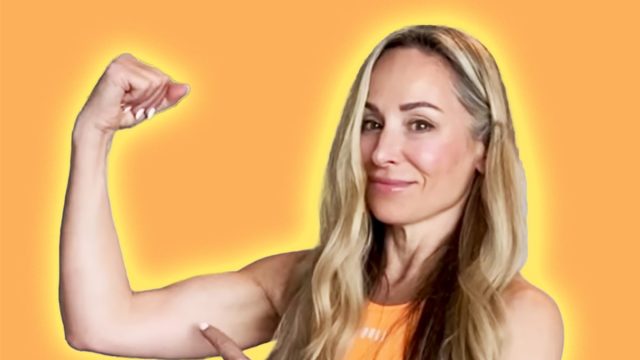Fit Coach, 59, Reveals Top Tips to Lose Weight Over 50

Are you over 50 and struggling to lose weight? You might need to face some "hard truths" and make some changes to your routine, according to an expert. Michaela Bentley is a CPT & Nutrition coach. At the age of 58, she looks half her age! She maintains that she has a better grasp of diet and exercise than she did in her forties. In a recent post, she reveals the truth about losing weight after menopause. "At 59 here are my top tips to losing weight after 50," she says, admitting they are "probably not what you think."
There Are No Quick Fixes
"There are no quick fixes," she writes. "The truth is I don't have a magic wand and neither does any other fitness trainer. The results are up to you. So many people quit way too soon due to unrealistic expectations. It's not your fault. The fitness industry is full of lies and half truths in order to get you to pull out your wallet. Real change takes time sometimes months and even years, depending on where you're starting from. Get a program from a qualified source, be patient and stick with it."
It's Going to Be Hard
"It's going to be hard," she continues. "Big changes in life are hard won. Nothing worth doing is easy and losing weight is no different especially over 50. If you're doing it right, it's going to be hard, especially in the beginning while your body gets used to the feeling of getting out of your comfort zone. If you're following a program that incorporates progressive overload, it's probably never going to be easy, but I assure you if you stick with it, you will learn to love that feeling of being challenged."
RELATED: 30 Best Protein Foods That Melt Fat Almost Instantly
You Will Have to Make Lifestyle Changes
"It's probably going to require a few lifestyle changes and you may not like them all," she says. "I've had many clients say to me. I'm going to do the fitness part, but I don't wanna change my lifestyle. I like having a drink in the evening and I don't want to track my food. That's great, but that's not gonna get you results. If you really want big changes, you have to make big changes and that's probably gonna mean changing some of your habits that are out of alignment with your goals and replace those with new healthy habits."
Consistency Over Perfection
"Consistency is more important than perfection," is her final tip. "You don't have to be perfect, (god knows, I am not) but you do have to be consistent. Slow and steady wins the race. You can't show up one day and then skip a bunch of days because you're not feeling it. You need to show up every day in some form or another. If you do that, I promise you those results will come in time."
She Also Started Strength Training
In another recent post, she revealed how she lost 15 pounds and got into the best shape later in life going "full ninja on belly fat." The first thing that worked to blast belly fat was, unsurprisingly, strength training. "Lifting weights CONSISTENTLY with a plan that incorporates progressive overload. All this means is that you are added load and difficulty over time in order to avoid plateaus," she writes.
RELATED: 8 High-Protein Foods with Nearly Zero Calories That Melt Fat
She Also Started Moving "A Lot More"
She also started moving more, "a lot more," she admits. "As a society we've become sedentary. Most of us spend a good majority of the day sitting at a desk. If we want to shake things up, metabolically we have to move more. Try adding intentional steps to your routine. Aim for at least 8000k-10000 a day."
Food Journaling and Tracking
"Start a food journal and preferably track your food through tracking app," she continued about habit number four. "Most of us have no clue exactly what we're eating and in what quantities. I can't tell you how many women tell me they eat under 1500 cal a day and then when we look at their food journal, they're actually eating almost double that."
RELATED: 12-3-30 Walking Method: 20 Proven Tips to Lose Weight Faster
Seeing a Doctor
"If you're struggling with symptoms of perimenopause or menopause, see your doctor," she says. "I had a truckload of symptoms that I had no idea were related to my declining hormones. Getting my hormones back into balance not only helped with the symptoms I was having but it helped me improve my sleep and general mood which in turn, helped me reduce stress and lose the weight." And if you enjoyed this article, take advantage of these 20 Superfoods for People Over 50.




